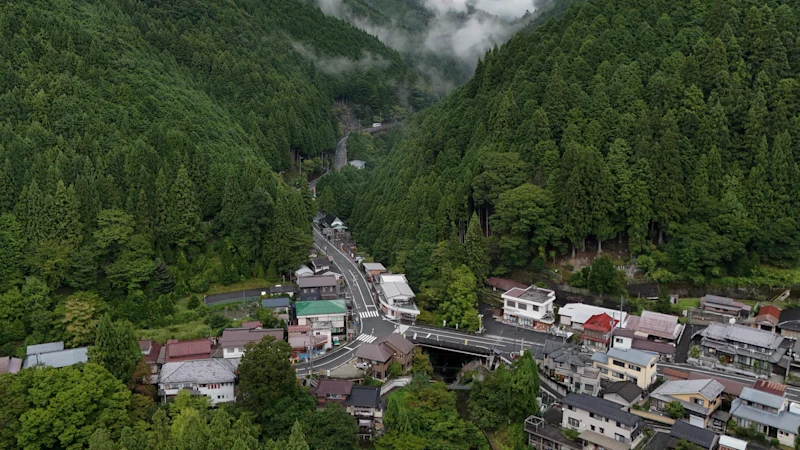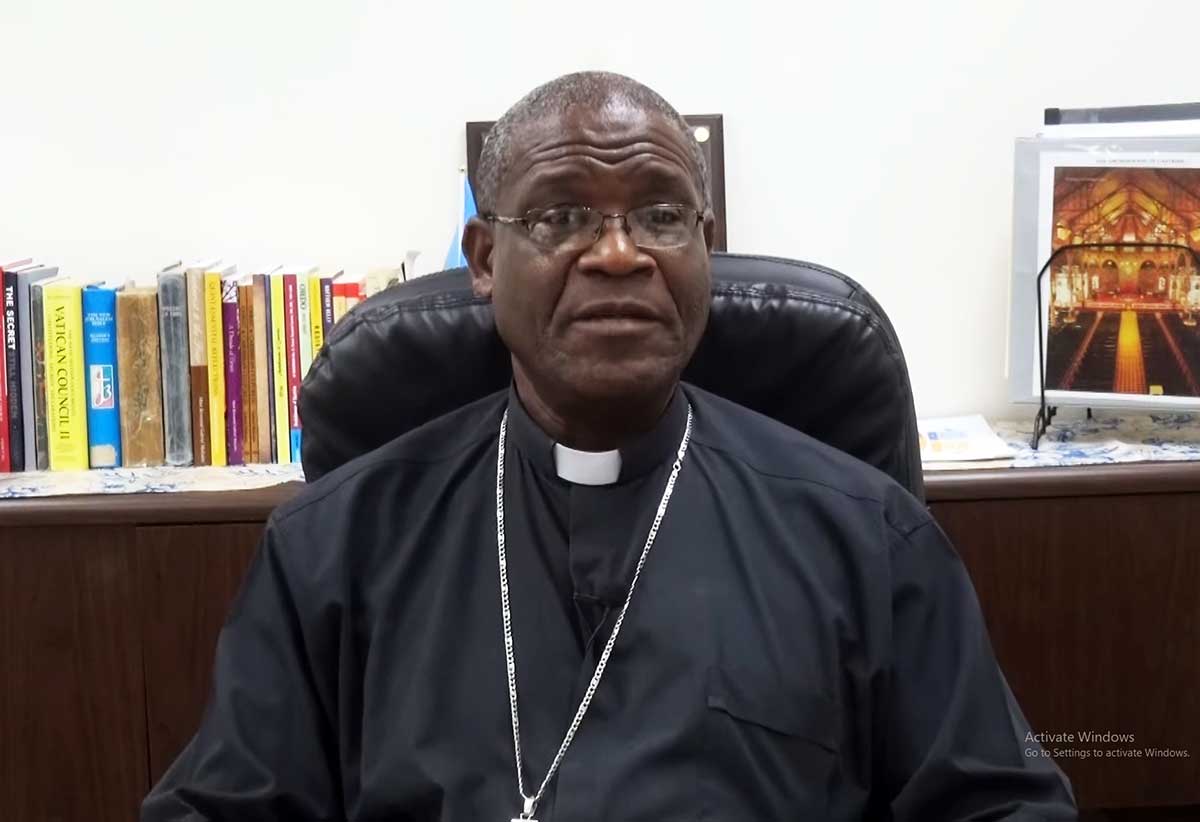Copyright National Geographic

We often think of homes and hotels as safe, predictable spaces. Yet step into a corridor that stretches farther than your eyes can focus, and your pulse quickens before you even know why. Scientists say these sensations aren’t superstition but the brain misreading its surroundings. Experts reveal how architecture—through walls, light, and sound—can deceive our senses, turning familiar places into something eerily unfamiliar. How our brains survey a space When we enter a new space, the air shifts, the light changes, and for a moment, your body pauses when you step into a building you’ve never visited. That’s because the “brain almost immediately starts to build an internal ‘map’ of the space … providing information about the spatial structure and layout of a space,” says Lisa Giocomo, professor of neurobiology at Stanford University School of Medicine, noting how walls, corners, and prominent landmarks help us orient ourselves. Once this internal map forms, the brain layers it with meaning drawn from memory and experience. Recognizing a building as a restaurant, for instance, brings expectations about where to order or pick up food. “This map is used by the brain to not only know where we are currently located but also where we can go in the future within that space,” says Giocomo. (Here’s what fear does to your brain and your body.) This constant effort to predict what comes next, known as predictive processing, is what keeps us feeling safe. But when a space defies those expectations, the system falters, and our sense of safety wavers. Why decay stirs unease Our brains are finely tuned to notice signs of decay. In old hotels, manors, or abandoned halls, subtle sensory cues—smells of rot, mildew, or dust—signal biological breakdown. “They cue us to spaces unfit for habitation,” says Beth Tauke, associate professor of architecture at the University at Buffalo, whose research at the Center for Inclusive Design and Environmental Access focuses on sensory design and spatial perception. “Then consider the echo of footsteps, which magnifies isolation. Finally, think about cooler, damp air, which evokes the subterranean.” LIMITED TIME OFFER (This is why getting scared can feel so good.) Once-grand buildings left in crumble evoke mortality and neglect, prompting us to wonder who once walked here and what happened. “This narrative vacuum, coupled with visual uncertainty, stimulates the brain’s default mode network, the same system used for imagination and memory, giving the space an almost haunted quality,” Tauke explains. “Your brain tells itself stories to make sense of the ruin, and those stories tend to skew toward danger or loss.” Disorientation tricks the mind Many so-called haunted spaces strip away the landmarks our brains rely on to navigate. In maze-like corridors, each turn mirrors the last, and every junction looks identical. Long hallways lined with repeating walls, doors, and paintings on either side leave us unsure where we’ve been or where we can go. “Without landmarks or a visible end, your brain struggles to tell you where you are in space,” says Tauke. “This produces mild disorientation and gives you a signal that something might be unsafe or ‘off.’” A 2021 study on architectural form and affect found that changes in spatial complexity, curvature, and lighting influence physiological arousal—people become more activated (alert, keyed up) when they move through certain kinds of rooms. Architects have long used such principles, intentionally or not—from the disorienting symmetry of Versailles’ Hall of Mirrors to the echoing voids of Brutalist buildings. (Real Appalachian ghost stories are scarier—and better—than #hauntedappalachia.) Repetition in a space also heightens unease. “Essentially, the environment feels too predictable to be real. This evokes the uncanny valley effect, but instead of for humanoids, it is for space,” Tauke explains, capturing the eerie feeling of something almost, but not quite familiar. Sensory conditions can make that confusion even stronger. “Uniform lighting can eliminate depth and shadow contrast, which dulls spatial cues,” says Tauke. “Temporal stillness—no movement, no variation in sound—signals environmental ‘wrongness.’” Prediction errors shape perception The brain’s spatial mapping system depends on stability, says Giocomo. “When something is uncertain, violates our prediction, like a sudden unexpected dead end, or is in conflict, like when the walls are moving faster or slower than our body movement tells us they should be, this can create discomfort, unease, and a loss in certainty,” she adds. “Haunted spaces” exploit this predictive system with corridors that loop back on themselves, random dead ends, or perfectly symmetrical junctions. Grand, crumbling staircases descending into darkness further amplify disorientation, triggering the brain’s orientation, memory, and threat-detection systems simultaneously. “Psychologically, the dark staircase represents a descent into the unconscious, where repressed fears reside,” Tauke says. “Even without explicit threat, the image carries the cultural memory of suspense.” Darkness flattens the visual field, forcing the eyes and body to deliver conflicting cues to the vestibular system, which manages balance. “When light is low or shadows obscure the steps, the visual cortex receives incomplete information about depth, contrast, and edge definition,” Tauke explains. “The mismatch between expected and actual feedback, like where the next step is, creates ‘prediction errors,’ which heighten attention and physiological arousal.” Ancient instincts are at play Our most primal survival systems evolved to spot danger and seek safety—and “haunted spaces” exploit both. Unusually large rooms, such as a 40-foot atrium or a grand ballroom, trigger unease as the brain struggles to gauge scale and locate potential threats. Add echoes, and the effect deepens. “An echo means sound is coming from multiple directions with slight delays, making it harder to pinpoint sources—including potential dangers,” says Sina Esteky, assistant professor of marketing at Miami University and a behavioral scientist and design researcher. “Moreover, the acoustic properties of large spaces can make familiar sounds seem alien or distorted.” Because sensory systems go into overdrive, you remain in a mild state of vigilance. Confined spaces create a different kind of stress. “In cramped environments, these systems detect reduced navigational options and limited escape routes, which can activate stress responses even when there’s no actual danger,” Esteky explains. “From an evolutionary perspective, being trapped historically meant vulnerability to predators, environmental hazards, or hostile encounters.” This instinct ties into prospect-refuge theory, which holds that humans prefer spaces offering both a wide view (prospect) and a sheltered, safe spot (refuge). Staircases exemplify these ancient reflexes. “Stairs can be thought of as architectural elements that echo ancient topographies of risk,” says Tauke. “Steep drops reference cliffs, hills, and even traps into which one falls. Curvature and L-shapes obstruct our view of predators. No rails suggest a lack of graspable vegetation or rock edges.” Descending a staircase makes the dynamic even clearer. At the top, there’s a sense of control. Midway down, the unknown below and behind erases that sense of refuge. At the bottom, relief can return as the brain once again confirms stability and escape routes, says Tauke.



